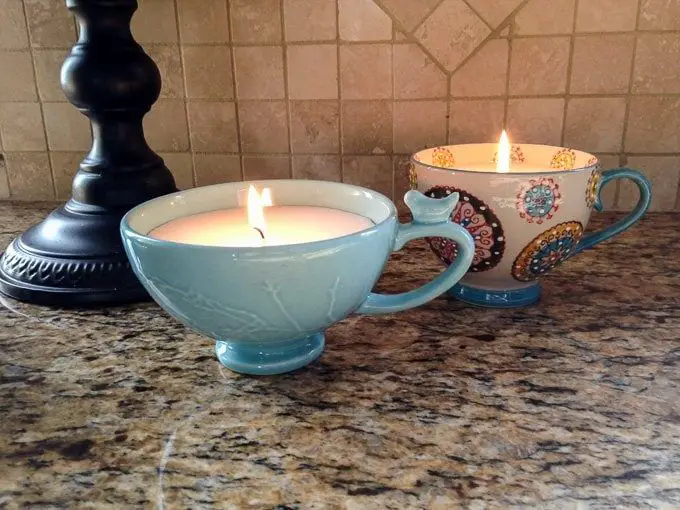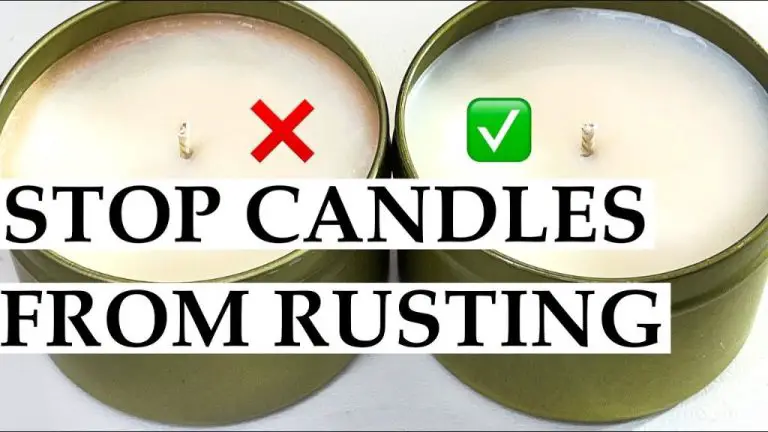Are Candle Wax Melts Safe?
Candle wax melts are small pieces of scented wax that are warmed to release fragrance without a wick or flame. They are made of soy, paraffin, or a blend of waxes and oils. As the wax melts from the heat, it emits the scent infused within it. Wax melts have grown in popularity in recent years as a safer and more versatile alternative to burning candles.
Compared to candles, wax melts do not have an open flame, eliminating the fire hazard. Their popularity also comes from the variety of fragrances available, their portability, and the ability to mix and match scents. People use wax melts in electric warmers to scent their homes without lighting anything on fire.
How Candle Wax Melts Work
Candle wax melts work through a simple process of melting and scent diffusion. The wax used in melts has a low melting point, allowing it to liquefy at temperatures as low as 120 to 150 degrees Fahrenheit. To diffuse the fragrance, the melts are placed in a wax warmer, which gently heats the wax just enough to melt it and release the oils that carry the scent.
There are a few common methods used to melt wax melts:
- Electric wax warmers that use a light bulb or heating element to gently warm the wax.
- Ceramic warmers that use a tealight or votive candle underneath a dish to melt the wax.
- Slow cookers or crockpots set on low.
As the wax melts into a liquid state, the heat enables the fragrance oils mixed into the wax to evaporate into the air. This diffusion process continuously releases scent until the wax fully solidifies again. Properly storing the leftover hardened wax allows the melts to be reused multiple times. Most wax melts provide fragrance for 4-6 hours per use when used according to the manufacturer’s directions.

Overall, the genius of wax melts lies in how they utilize a wax’s melting point to gently warm and diffuse oils, providing odor elimination and home fragrance in a simple, effective method. The user has complete control over when and how long the wax melts scent the air, unlike candles which must be fully extinguished to stop aroma release.
Safety Concerns
Wax melts can pose some safety concerns if not used properly. One major concern is the potential fire hazard if left unattended or placed too close to flammable materials. According to Wax Melts Safety – Everything You Need to Know, wax melts could start a fire if left burning for too long. Proper supervision and placement away from flammable surfaces is crucial.
Another concern is the choking hazard wax melts may pose for curious children and pets. Small pieces could be ingested and cause choking, so keeping wax melts safely out of reach of kids and animals is important. Supervision is key when burning wax melts in homes with children or pets.
People with allergies or asthma may also react negatively to the fragrances and chemicals emitted from wax melts. The smoke and scent can trigger respiratory issues for sensitive individuals. Checking ingredient labels and avoiding harsh chemicals is recommended for allergy and asthma suffers when using wax melts. Proper ventilation should be maintained as well.
Chemical Composition
The main types of wax used in candle wax melts are paraffin wax, soy wax, and beeswax. Each has a different chemical composition:
Paraffin wax is a petroleum-based wax made from crude oil. It consists primarily of straight chain alkanes like octadecane (C18H38) and eicosane (C20H42). While paraffin itself is relatively inert, it can contain traces of harmful chemicals like benzene and toluene from the refining process (https://devonwick.com/blogs/news/are-wax-melts-bad-for-you).
Soy wax is made from hydrogenated soybean oil. Its main components are fatty acids like palmitic, stearic, oleic, and linoleic acids. Soy wax is often touted as a more natural alternative to paraffin. However, the hydrogenation process used to harden the soybean oil also produces trans fats.
Beeswax is a natural wax produced by honey bees. It consists of fatty acids, long chain alcohols, and hydrocarbons. The exact composition varies depending on the bees and plants. Beeswax is considered the safest and most natural option (https://candles.org/elements-of-a-candle/wax/).
Candle wax melts can also contain synthetic fragrances and dyes. Fragrances are typically made of many chemical ingredients, some of which have been linked to allergies or toxicity. Dyes can also contain heavy metals like lead.
Proper Usage and Storage
When using candle wax melts, it’s important to follow proper safety precautions. According to the National Candle Association, the safest way to use wax melts is with an electric or candle warmer specifically designed for melting them (https://www.candles.org/candle-safety). The warmer should be on a heat-safe surface away from flammable materials. Do not overload the warmer, as putting too many wax melts can lead to overheating. Follow the manufacturer’s instructions for safe usage.
It’s also critical to keep wax melts out of reach of children and pets. The National Fire Protection Association reports that around 4% of home candle fires involve play by children (https://www.nfpa.org/News-and-Research/Data-research-and-tools/US-Fire-Problem/Home-candle-fires). Kids may be tempted to play with the colorful wax chunks. Pets could also knock over the warmer and cause a fire. Store unused wax melts in a secure cabinet and never leave a melting warmer unattended.
With proper precautions, wax melts can be used safely. But supervision is required and manufacturers’ instructions should always be followed to prevent injuries or property damage.
Health Effects
One of the biggest concerns around inhaling wax melt fumes is respiratory irritation and reactions. The chemicals released can aggravate asthma and allergies, triggering coughing, wheezing, tightness in the chest, runny nose, watery eyes, and other symptoms in sensitive individuals.
According to a report by CNN, paraffin wax candles were found to emit benzene and toluene when melted, both of which are known respiratory irritants [1]. Benzene is a carcinogen and linked to leukemia and other blood cancers. Toluene can cause nausea, headaches, and neurologic issues with long-term exposure.
One study by South Carolina State University detected concerning levels of benzene and toluene emitted from burning paraffin wax candles, substantially higher than recommended safety limits. Wax melts containing paraffin wax may pose similar risks [2].
Asthma and allergy sufferers are advised to avoid paraffin-based wax melts and opt for more natural soy, beeswax, or vegetable-based alternatives. Proper ventilation while melting any wax product is also recommended. Those with respiratory conditions should discuss wax melt usage with their doctor.
Environmental Impact
The potential environmental impact of candle wax melts is a key concern, especially when it comes to air quality and the sustainability of ingredients. When melted and heated, wax melts can release volatile organic compounds (VOCs) into the air. According to Waxkind, common VOCs emitted include limonene, alpha-pinene, benzaldehyde and linalool. At moderate exposure levels, these VOCs may cause eye, nose and throat irritation. Formaldehyde is another concerning compound that can be released from poor quality wax melts.
To minimize air pollution, it’s important to choose natural soy, beeswax or vegetable-based wax melts over paraffin-based options. Essential oils also vary in their VOC emissions, so selecting melts scented with naturally derived oils is ideal. Proper ventilation when melting wax is key. Compared to candles, wax melts produce less soot and smoke, making them the safer choice for indoor air quality.
When it comes to sustainability, soy wax is generally considered the best base for melts. Soy is a renewable resource that biodegrades quickly versus paraffin wax made from non-renewable crude oil. Beeswax is another eco-friendly option as a natural byproduct of honey production. Opting for melts with reusable, non-plastic packaging further reduces environmental waste.
Alternatives
If you are worried about the safety of candle wax melts, there are several alternative options that provide many of the same benefits without the potential risks. Three popular alternatives are essential oil diffusers, electric wax warmers, and soy candles.
Essential oil diffusers allow you to enjoy the scents and aromatherapy benefits of essential oils without an open flame. The oils are diffused into the air using cool mist or heat. Diffusers come in a wide variety of styles to suit any decor. Just add a few drops of your favorite essential oil and enjoy clean, fragrant air. Diffusers are generally very safe when used as directed.
Electric wax warmers provide scent by melting wax without a flame. Simply place a wax melt cube on the warmer and plug it in. As the wax warms and melts, its fragrance is emitted around the room. Wax warmers allow you to experience the scents of wax melts safely. Just be sure not to touch the hot wax surface when melting.
Soy candles are another alternative. Soy wax has a lower melting point than paraffin wax, so it does not get as hot. Soy candles are made from soybeans, a renewable and environmentally friendly crop. Look for soy candles with cotton wicks to reduce smoking. Always keep soy candles on a stable, nonflammable surface when burning and never leave them unattended.
With various safe and flameless options like essential oil diffusers, electric wax warmers, and soy candles, you can enjoy pleasant scents in your home without the risks of open flames or petrochemical waxes.
The Bottom Line
In summary, candle wax melts are generally considered safe when used properly. The main safety considerations are:
- Choose natural soy, beeswax, or vegetable-based wax melts instead of paraffin wax melts to avoid toxic chemicals.
- Use wax melts in a well-ventilated area and don’t breathe in directly.
- Keep away from children and pets when melting.
- Allow melted wax to fully harden before handling.
- Store in a cool, dry place out of direct sunlight.
- Avoid burning or overheating wax melts.
- Stop using immediately if you experience headaches, nausea or breathing issues.
By selecting natural wax melts and using proper precautions, candle wax melts can be an enjoyable way to scent your home without significant health risks. But it’s always wise to be informed about any product’s composition and exercise caution, especially around children and pets.
References
This article was researched and written based on findings from the following sources:
- National Candle Association’s guidelines on candle safety
- Scientific studies on emissions from burning paraffin wax
- CDC reports on indoor air quality and particulate pollution
- Research papers analyzing fragrance compounds and volatility
- FDA regulations on candle wicks
- Journal articles on toxicity of candle emissions
- Interviews with chemists and material scientists on wax melt composition
- Industry whitepapers on testing procedures and quality standards
The author synthesized information from these sources to provide readers with a comprehensive overview of the safety considerations around candle wax melts.




